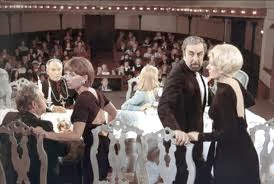All actions of all men in the markets are various forms of arbitrage
Medieval thinkers were tempted to believe that if you
throw a rock it flies straight until it runs out of force, and then it falls
straight down. Economists are tempted to think of prices as a linear function
of the “money supply”, and interest rates to be based on “inflation
expectations”, which is to say expectations of rising prices.
The medieval thinkers, and the economists are “not
even wrong”, to borrow a phrase often attributed to physicist Wolfgang Pauli.
Science has to begin by going out to reality and observing what happens. Anyone
can see that in reality, these tempting assumptions do not fit what occurs.
In my series of essays on interest rates and
prices[1], I argued that the system has positive feedback and resonance, and
cannot be understood in terms of a linear model. When I began this series of
papers, the rate of interest was still falling to hit a new all-time low. Then
on May 5,2013, it began to shoot up. It rose 83% over a period of exactly four
months. That may or may not have been the peak (it has subsided a little since
then).
Several readers asked me if I thought this was the
beginning of a new rising cycle, or if I thought this was the End (of the
dollar). As I expressed in Part VI, the End will be driven by the withdrawal of
the gold bid on the dollar. Since early August, gold has become more and more abundant in the market.[2] I think it is safe
to say that this is not the end of the dollar, just yet. The
hyperinflationists’ stopped clock will have to remain wrong a while longer. I
said that the rising rate was a correction.
I am quite confident of this prediction, for all the
reasons I presented in the discussion of the falling cycle in Part V. But let’s
look at the question from a different perspective, to see if we end up with the
same conclusion.
In the gold standard, the rate of interest is the
spread between the gold coin and the gold bond. If the rate is higher, that is
equivalent to saying that the spread is wider. If the rate is lower, then this
spread is narrower.



















